If you’re a biking fan and love to capture those exciting moments and beautiful landscapes while you’re at it, investing in a compact camera might be the best decision for you. These cameras are ideal for biking enthusiasts like you because they are lightweight and small and can easily fit into your backpack or pocket. They are also easy to use and produce high-quality images and videos.
In this article, I will take you through the top 5 compact cameras perfect for your biking adventure, and you can choose one that best suits your needs. These cameras are great for shooting selfies, landscapes, or action-packed scenes. Read on to find out more.
Key Features to Consider When Selecting the Best Camera for Biking
Here are some key features to consider for the best camera for cycling:
1. Size and Portability
Your camera for biking adventures should be small and lightweight to easily fit into your pocket or camera bag for bikepacking without adding too much weight. It should also be easy to operate with one hand and have simple interface controls.
2. Durability and Weather Resistance
During biking, your camera can be exposed to harsh conditions such as rain, dust, shock, and dirt. Therefore, the best camera for mountain biking should withstand these extreme conditions without being damaged and making you lose those precious memories.
Look out for those rugged-designed cameras with waterproof casings, dustproof seals, and shockproof cases. They are most likely to withstand these harsh biking conditions.
3. Image Quality and Resolution
You also want to capture those exciting moments and beautiful landscapes in clear, high-quality images and videos. Therefore, select a biking camera can provide you with these.
Go for cameras with high-resolution sensors, wide apertures, fast shutter speeds, low-light performance, great video quality, and frame rate for high-quality video recording.
4. Image Versatile Zooms and Focal Lengths
While optical zoom allows you to get closer to your subjects without compromising on image quality, focal length range determines the width or narrowness of your angle of view. Go for a camera with versatile zooms and focal lengths to adapt to various situations and scenes.
5. Image Stabilization Technology
Taking pictures during biking can cause a lot of vibrations, leading to blurry images. You can prevent this by selecting the best camera for cycling photography. This should have cameras with different image stabilization technology, such as optical, digital, or hybrid.
6. Battery Life and Charging Options
In other not to run out of power in your camera during your biking adventure and deprive you of capturing those beautiful moments, you need to have a camera with long-lasting batteries that can take many shots and minutes of videos with a single charge.
The best camera for cycling should take little time to get charged and should have convenient charging options such as removable batteries that can be swapped with spares or chargeable batteries using USB or power banks.
7. Connectivity and Sharing Capabilities
This allows you to share those lovely moments with friends and family or post them on various social media platforms. Features such as wi-fi-fi, Bluetooth, NFC, or GPS allow you to connect your camera to your smartphone or tablet and transfer your files seamlessly.
Best Cameras For Cycling
Now that I have taken you through the features that qualify the best compact cameras for your biking adventure, let us look at some of the best cameras for cycling.
Fujifilm X100V
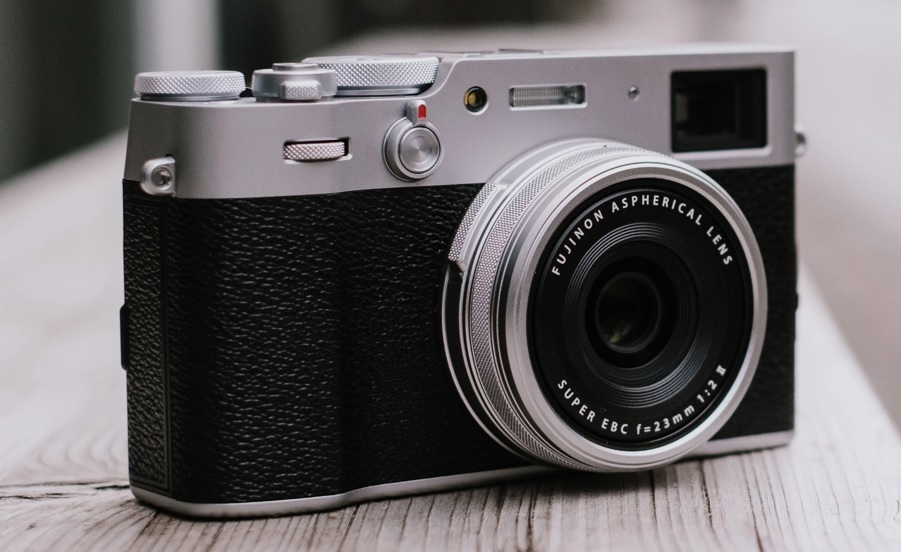
A premium small camera with a fixed 23mm f/2 lens and an APS-C 24.3MP sensor is the Fujifilm X100V. It sports a touchscreen that can be tilted and a hybrid optical/electrical viewfinder. It features a vintage appearance, good image quality, and is made for street and travel photography.
Key characteristics and details
- 26.1MP X-Trans CMOS 4 sensor 23mm f/2 lens (35mm equivalent) X-Processor 4 image processor
- optical and electronic hybrid viewfinder
- 3.6-inch touchscreen with 1.62 million dots that tilts
- video recording in 4K/30p using F-Log and Eterna film simulation
- 4-stop ND filter built-in
- Weatherproof (with filter and filter adapter)
- Only one SD card slot (UHS-I)
- USB-C port (supports headphones and charging)
- mic port 2.5 mm
- Bluetooth and Wi-Fi connection
Pros:
- Beautiful handling and design
- sensor and autofocus improvements
- EVF with higher resolution than previously creates crisp images.
- Shoots 4K video now
Cons:
- Filter required for complete weather-sealing
- Expensive for a fixed lens camera
What people are saying about the Fujifilm X100V
“Amazing “Jewel” of a camera with gorgeous classic styling, modern amenities, and top-notch image quality. The 4-way controller is no longer there, thus you must swipe the back screen to replace it….” – Original source: Amazon.com
Examples of photos taken with this lens
Click on this link to see some examples of photos taken with this camera
Sony ZV-1
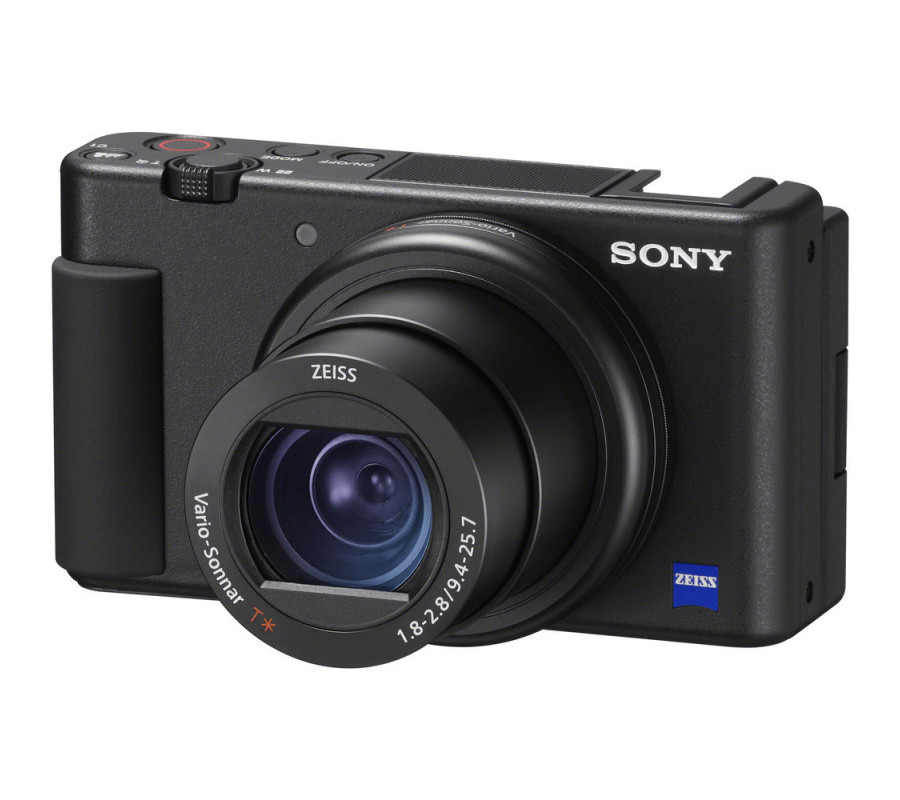
Compact camera for vlogging and content production, the Sony ZV-1. It sports a 24-70mm equivalent f/1.8-2.8 lens and a 1 inch, 20.1 MP sensor. It has a flip-out screen, a microphone that faces one way, and a variable-angle grip. It’s perfect for taking high-quality pictures of both you and your surroundings.
Key characteristics and details
- 24-70mm equivalent f/1.8-2.8 lens, 20.1MP 1-inch Exmor RS CMOS sensor, and BIONZ X image processing.
- 921,600-dot 3-inch flip-out touchscreen
- 2.36 million dot, 0.39-inch electronic viewfinder (optional equipment)
- S-log3 and HLG video recording in 4K/30p
- Real-time tracking and eye AF for both people and animals
- directional microphone with windshield built-in
- a shoe with many interfaces for external accessories
- (Optional) Variable-angle grip with tripod capability
- Only one SD card slot (UHS-I)
- Small USB port (that allows charging)
- 3.5mm mic port, micro HDMI port
- Bluetooth and Wi-Fi connection
Pros:
- body that is little and light
- rapid and precise autofocus
- For vlogging, a flip-out screen and microphone are excellent.
- good features for videos and images
Cons:
- a limited battery life
- a small zoom range
- neither a USB-C port nor a headphone jack
What people are saying about the Sony ZV-1
“…I adore the auto settings since they adjust automatically to the appropriate illumination in any situation. ideal for vlogs… The battery life is, in my opinion, the only con of this camera.” – Original source: Amazon.com
Examples of photos taken with this lens
For some samples of pictures taken with this camera, click here
Panasonic Lumix LX100 II
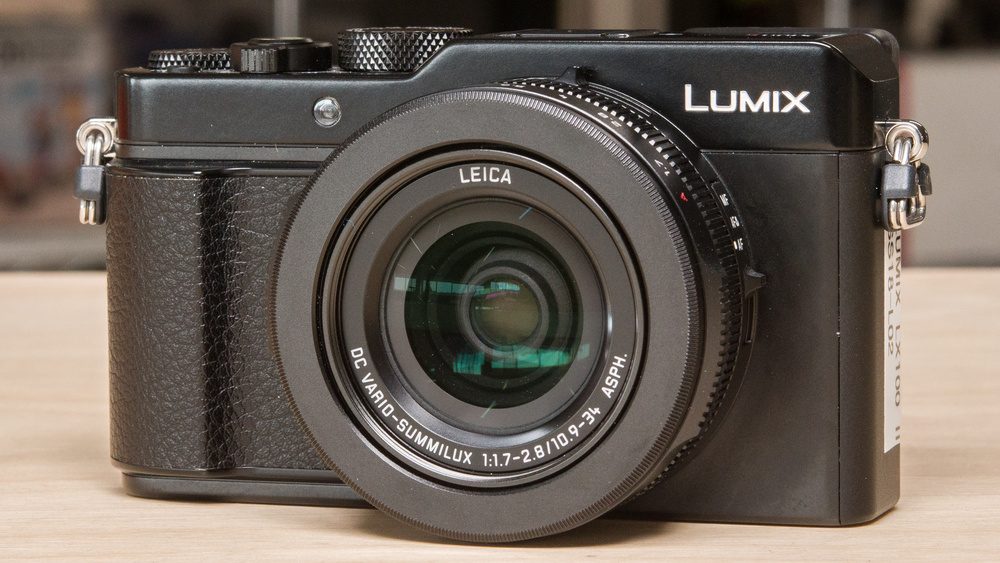
Compact camera with a 24-75mm equivalent f/1.7-2.8 lens and a 17MP Four Thirds sensor is the Panasonic Lumix LX100 II. It sports a touchscreen and an integrated electronic viewfinder. It is intended for enthusiasts who seek a strong, flexible camera in a compact form.
Key characteristics and details
- 17MP Four Thirds MOS sensor 24-75mm equivalent f/1.7-2.8 lens Venus Engine image processing
- Using the selection switch on the lens, you may view in 4:3, 3:2, 16:9, and 1:1 aspect ratios.
- electronic viewfinder with 2.76M dots
- 1.24 million dot 3-inch touchscreen with 4K/30p video and 4K photo modes
- Features like Post Focus and Focus Stacking
- Bluetooth and Wi-Fi connection
- Only one SD card slot (UHS-I)
- Micro USB port (charges devices)
- HDMI miniport
- mic port 2.5 mm
Pros:
- massive sensor for a small-sized camera
- fast and precise lenses
- satisfactory body-mounted controls
- a cutting-edge multi-aspect sensor
Cons:
- slowly zooming
- a fixed back screen
- a difficult digital interface
What people are saying about the Panasonic Lumix LX100 II
“It is a fantastic camera for taking street photos. Both portable and with excellent pictures. My main goal is to avoid using the camera’s charger! Additionally, it is a poor camera for taking nighttime pictures.” – Original source: Amazon.com
Examples of pictures taken with this camera
If you woud love to see some pictures of this camera, click here
Canon PowerShot G5 X Mark II
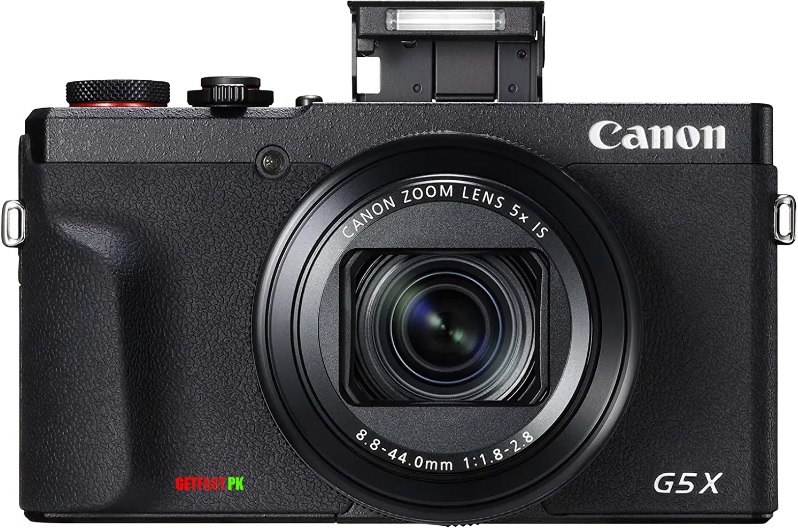
Compact camera with a 20.1MP 1-inch sensor and a 24-120mm equivalent f/1.8-2.8 lens is the Canon PowerShot G5 X Mark II. It has a touchscreen that tilts and an electronic viewfinder that pops up. It is intended for enthusiasts who desire a strong camera with good video features that is adaptable.
Key characteristics and details
- 1″ CMOS sensor with a 20.1MP resolution DIGIC 8 image processor
- 24-120mm f/1.8-2.8 equivalent lens
- Pop-up electronic viewfinder with 2.36M dots
- A 3.0 inch touchscreen with 1.04 million dots tilts
- capturing videos in 4K/30p without cropping
- Real-time eye tracking and AF for people
- Wi-Fi and Bluetooth connection built-in
- Only one SD card slot (UHS-I)
- (Supports charging) USB-C port
- HDMI miniport
- mic 3.5mm port
Pros:
- body that is little and light
- rapid and precise autofocus
- Tilting screens and pop-up EVFs are helpful.
- good features for videos and images
Cons:
- no microphone or headphone jack
- Not as sophisticated as some rivals’ autofocus
- Battery life could be improved.
What people are saying about this camera
“very small and light, a fantastic zoom lens, an excellent electronic viewfinder, beautiful construction, and the ability to shoot in raw format…The deployment of the view finder requires two steps, which is the only small criticism.” – Original source: Amazon.com
Some examples of photos taken with this camera
Click here for some examples of photos taken with this camera.
Ricoh GR IIIx
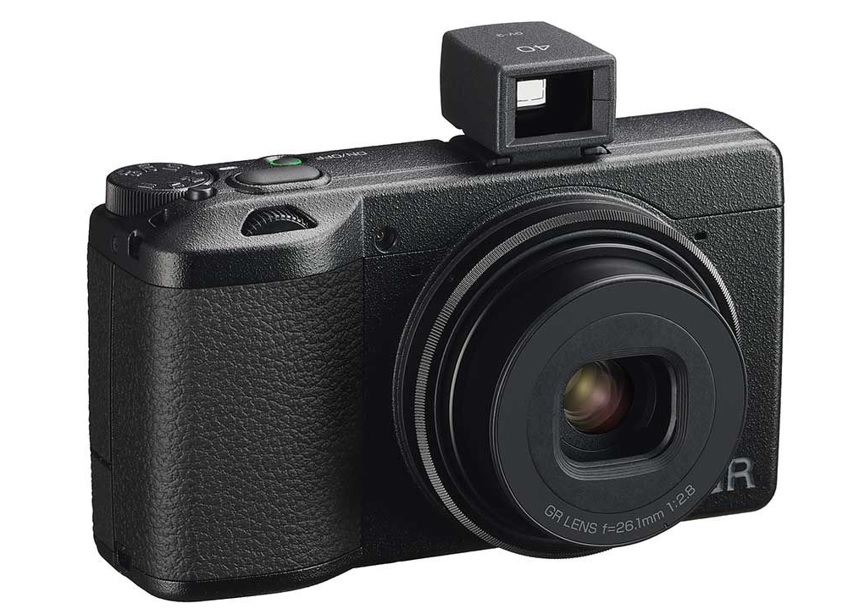
The Ricoh GR IIIx is a small camera with an APS-C 24MP sensor and a fixed 40mm equivalent f/2.8 lens. It boasts an in-body image stabilization system, a touchscreen, and a small body. With a simple appearance and superior image quality, it’s made for street and travel photography.
Key characteristics and details
- 40mm equivalent f/2.8 lens, GR Engine 6, 24MP APS-C CMOS sensor
- 1-million-dot touchscreen at three inches
- 3-axis in-body image stabilization
- capturing videos in full HD/60p
- Features like Snap Focus and Touch AF
- Bluetooth and Wi-Fi connection
- Only one SD card slot (UHS-I)
- (Supports charging) USB-C port
- optional teleconverter and external viewfinder
Pros:
- A small camera with a large sensor
- swift and precise lens
- Strong and simple design
- Good handling and customizing
Cons:
- restricted video features
- no built-in viewfinder, and no flash
- a limited battery life.
What people are saying about this camera
“The camera is portable and tiny enough to carry in a pocket or handbag, making it the ideal option for photographers who want to capture stunning images while they’re out and about…The battery’s short life is the only obvious drawback.” – Original source: Amazon.com
Examples of photos taken with the Ricoh GR IIIx
Here are some examples of photos taken with this camera
Comparison and Analysis
Choosing the best action camera for cycling can take time and effort. However, I plan to make it less daunting with this tabular comparison of the various cameras with the tables below.
Size and Portability
| Ricoh GR IIIx | Canon PowerShot G5 X Mark II | Panasonic Lumix LX100 II | Sony ZV-1 | Fujifilm X100V |
| 109.4 x 61.9 x 33.2 mm; 257g | 110.9 x 60.9 x 46 mm; 340g | 115 x 66.2 x 64.1 mm; 392g | 4.15 x 2.36 x 1.71 inches (105.5 x 60 x 43.5 mm), 294 grams | 5.0 x 2.9 x 2.1 inches (128 x 75 x 53 mm), 478 grams |
Durability and Weather Resistance
| Ricoh GR IIIx | Canon PowerShot G5 X Mark II | Panasonic Lumix LX100 II | Sony ZV-1 | Fujifilm X100V |
| Magnesium alloy body, dust removal system, no weather sealing | Aluminum alloy body, no dust removal system or weather sealing | Metal body, no dust removal system or weather sealing | Plastic body, no dust removal system or weather sealing | Magnesium alloy body, dust and moisture resistant (with optional adapter ring and filter) |
Image Quality and Resolution
| Ricoh GR IIIx | Canon PowerShot G5 X Mark II | Panasonic Lumix LX100 II | Sony ZV-1 | Fujifilm X100V |
| 24MP APS-C CMOS sensor, fixed 26mm f/2.8 lens (equivalent), no optical zoom | 20MP 1-inch BSI-CMOS sensor, retractable 24-120mm f/1.8-2.8 lens (equivalent), 5x optical zoom | 17MP Four Thirds CMOS sensor, fixed 24-75mm f/1.7-2.8 lens (equivalent), 3.1x optical zoom | 20MP 1-inch BSI-CMOS sensor, fixed 24-70mm f/1.8-2.8 lens (equivalent), 2.7x optical zoom | 26MP APS-C X-Trans CMOS sensor, fixed 35mm f/2 lens (equivalent), no optical zoom |
Optical Zoom and Focal Length
| Ricoh GR IIIx | Canon PowerShot G5 X Mark II | Panasonic Lumix LX100 II | Sony ZV-1 | Fujifilm X100V |
| 26mm f/2.8 | 24-120mm f/1.8-2.8 | 24-75mm f/1.7-2.8 | 24-70mm f/1.8-2.8 | 35mm f/2 |
Image Stabilization Technology
| Ricoh GR IIIx | Canon PowerShot G5 X Mark II | Panasonic Lumix LX100 II | Sony ZV-1 | Fujifilm X100V |
| Sensor-shift stabilization with 3-axis compensation | Optical stabilization with Dual Sensing IS and Combination IS | Optical stabilization with Power OIS | Optical stabilization with SteadyShot Active mode | Sensor-shift stabilization with digital image stabilization option |
Battery Life and Charging Options
| Ricoh GR IIIx | Canon PowerShot G5 X Mark II | Panasonic Lumix LX100 II | Sony ZV-1 | Fujifilm X100V |
| 200 shots per charge, USB-C charging | 230 shots per charge, USB-C charging | 340 shots per charge, AC adapter or USB charging | 260 shots per charge, USB charging | 350 shots per charge, USB-C charging |
Connectivity and Sharing Capabilities
| Ricoh GR IIIx | Canon PowerShot G5 X Mark II | Panasonic Lumix LX100 II | Sony ZV-1 | Fujifilm X100V |
| Wi-Fi, Bluetooth, USB-C | Wi-Fi, Bluetooth, HDMI, USB-C | Wi-Fi, Bluetooth, HDMI, USB | Wi-Fi, Bluetooth, HDMI, USB | Wi-Fi, Bluetooth, HDMI, USB-C |
From the table above, you can easily pick out each camera type’s strengths and weaknesses and choose the best camera for cycling.
Tips For Using Cameras on Biking Adventures
Here are some tips you can follow while using your cameras on your biking adventures
Mounting Options and Accessories
- Use the helmet or handlebar mount for a front-facing view of your ride, the chest mount for a lower view, and the seat post mount for a rear view.
- Avoid using the helmet mount for long rides, as it may become uncomfortable
- For easy access to your camera, the handlebar mount is the best. However, the vibrations and bumps can be an issue.
- Use the tripod mount to capture static shots of your surroundings.
- Use accessories such as microphones, remote controls, and external batteries to enhance your filming experience.
Adjusting Camera Settings for Different Environments
- Choose a resolution that suits your purpose and device. Use 4K resolutions for large screens and cropping and 1080p for online platforms or devices.
- Use a 60fps frame rate for fast-paced or slow-motion scenes and 30fps for normal scenes.
- Use manual exposure or white balance for consistent or creative image control, while automatic control is best for unpredictable light situations.
Composition and Framing Techniques
- Use the rule of thirds for more balance in your photo
- For depth and direction, use leading lines for your composition
- If you want to change your subjects’ apparent size, shape, or position, use perspective.
- For order and stability in your photo, use symmetry
- To create tension and variety in your image, use contrast
Safety Precautions While Using the Camera During Cycling
- Check local laws and regulations before embarking on your adventure
- Choose the best mounting option and accessory for your trip depending on terrain or speed
- Attach your camera and accessory securely to your bike
- Do not distract yourself with the camera while riding
- Respect other road and trail users while riding. Do not film them without their consent or cause them any form of inconvenience.
Conclusion
I have analyzed the top 5 best cameras for cycling adventures and compared them under various headings after looking at their overview, key features, and biking-related benefits and drawbacks. Additionally, I’ve included tips on mounting options, camera accessories, positioning the camera for various circumstances, composition and framing strategies, and safety considerations when cycling while using the camera.
Cycling while holding a tiny camera may be a fun and creative experience and help you fill your photo book. They may assist you in documenting your trips, sharing them with others, motivating more individuals to travel the globe on two wheels, and increasing your appreciation and love of nature, culture, and exploration.
But only some small cameras for biking are made equally. Depending on your bicycle excursions’ terrain, pace, style, and goal, some may better meet your requirements and preferences. As a result, I advise you to make your decision based on your research and standards.